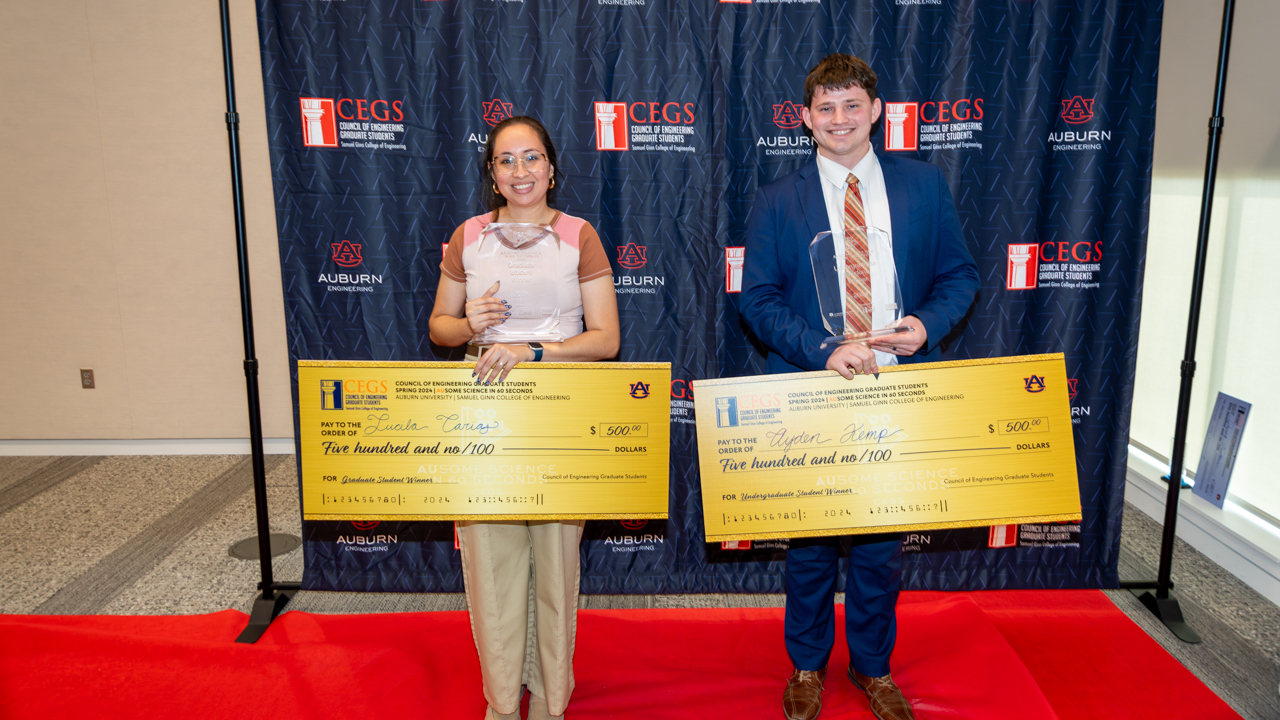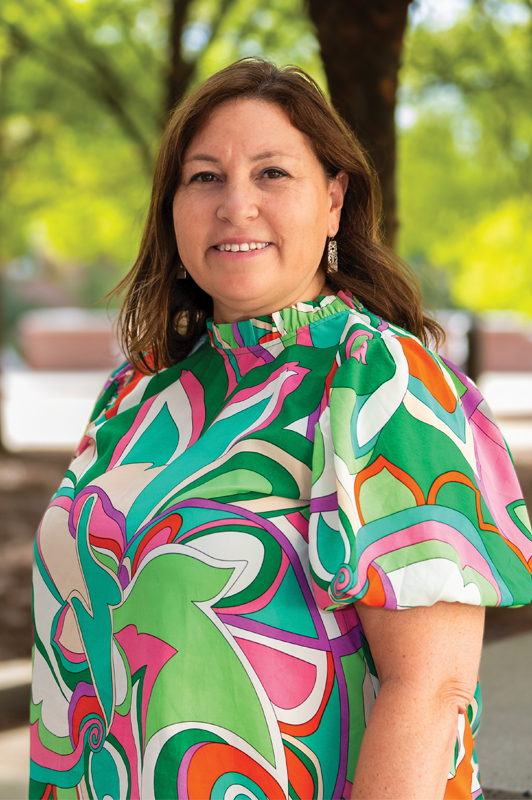Students’ awesome research ideas celebrated at college’s second AUSome Science in 60 Seconds
Published: Apr 25, 2024 4:25 PM
By Joe McAdory
Can waste materials be used to produce sustainable 3D-printed housing? Can sustainable fuel trim aircraft emissions in the fight against climate change and end our dependence on aviation petroleum? Can Auburn engineering students examine such research projects, then explain them on video in just 60 seconds?
Of course they can.
AUSome Science in 60 Seconds, a research-based competition in its second year presented by the Council of Engineering Graduate Students (CEGS), tasked students to create videos and explain their respective projects in a minute or less. Winners were announced during an awards ceremony on Thursday, April 25.
Since registration opened in January, students recorded video presentations using animation, simulation, diagrams, pictures, or demonstrations explaining overviews of their respective studies — but at a level where general audiences can follow. Judging was based on engagement, illumination, creativity and understanding of the subject matter.
Lucila Carias, a second-year graduate student in polymer and fiber engineering in the Department of Chemical Engineering, and Ayden Kemp, a senior double-majoring in aerospace engineering and biosystems engineering, earned highest marks among faculty judges — winning top honors in graduate student and undergraduate student categories.
Carias, a member of the polymer and fiber research laboratory and recipient of the 2024 100+ Women Strong Outstanding Graduate Award (chemical engineering), noted that an estimated 14% of the state of Alabama’s population is house insecure. Her solution: sustainable 3D-printed housing.
“We aim to engineer bio-resins that target the advanced manufacturing industry of the future,” said Carias, a member of the college’s Center for Polymers and Advanced Composites. “We envision alleviating these challenges by using waste material for low-cost, environmental benefits to produce sustainable resins for 3D printed houses. Furthermore, another problem for which we found a solution is to decrease the number of accidents in the current process of building homes; that is also one of the main goals of this project. We are going to take that out of the equation and use machines so that we can print houses.”
Carias added that the research is a collaboration between Auburn University and the University of Idaho.
Kemp, who will graduate in May and plans to follow that by pursuing a graduate degree in biosystems engineering, developed a plan to not only end our dependence on petroleum for aviation and replace them with sustainable fuels made from converted waste and/or renewable sources.
How? By pyrolysis.
“Pyrolysis is heating the material at high temperatures, but under an inert atmosphere,” he said. “There's no oxygen. The material is not burning. The energy that's being supplied by the heat splits the molecules that make each of those compounds. Biomass and polystyrene both have a lot of cyclic aromatic benzene ring structures that when heated, will separate from the other ones, and then that can be used as an additive to make sustainable aviation fuels.”
Kemp, who is also working toward a bachelor’s degree in aerospace engineering, was drawn to biofuels production research as a sophomore.
“I took that knowledge and added my own twist,” said Kemp, who credited Sushil Adhikari, professor in biosystems engineering, and Hossein Jahromi, assistant professor in biosystems engineering. “Most of the research in our lab is with pine pyrolysis, which is used for biodiesel fuel. I added in a plastic component so I could make more of the aerospace fuels.”
Other selected winners included:
- Samuel Ginn College of Engineering Dean’s Office Video: Katie Wolfe, electrical and computer engineering.
- CEGS Most Creative Video: Shireen Singh, graduate student in chemical engineering.
- Undergraduate finalists: Sam Yount, mechanical engineering, and Ethan Wavra, chemical engineering. Wavra also won the People’s Choice Award.
- Graduate finalists: Tori Phillips, chemical engineering, and Jacob Faulkner, chemical engineering.
“Experiential learning opportunities such as AUSome Science in 60 Seconds provides student researchers with the opportunity to sharpen their skills for future endeavors,” said Maria Auad, associate dean for graduate studies and faculty development. “With today’s available technology, scientists can share their research – in a nutshell – to viewers on-demand. Projects like this allow students to polish their presentation and technology skills before they enter the workforce.
“I’m thrilled with not only the research our students undertake, but also the scope and diversity of projects from departments throughout the college.”
Matthew Garnett, CEGS president and PhD candidate in chemical engineering, said the purpose of the competition was to give graduate and undergraduate students a platform to be creative and showcase their research to a general audience.
“These videos will be used as recruitment tools to help attract prospective students to Auburn and show off the cool work being done on our campus,” he said. “I was very impressed with the content and quality of the videos. The judging panel had a hard time determining our overall winners, as many of the videos were exceptional. We look forward to hosting this competition in the future.”
Media Contact: , jem0040@auburn.edu, 334.844.3447
AUSome Science in 60 Seconds overall graduate winner Lucila Carias, left, and undergraduate winner Ayden Kemp.


